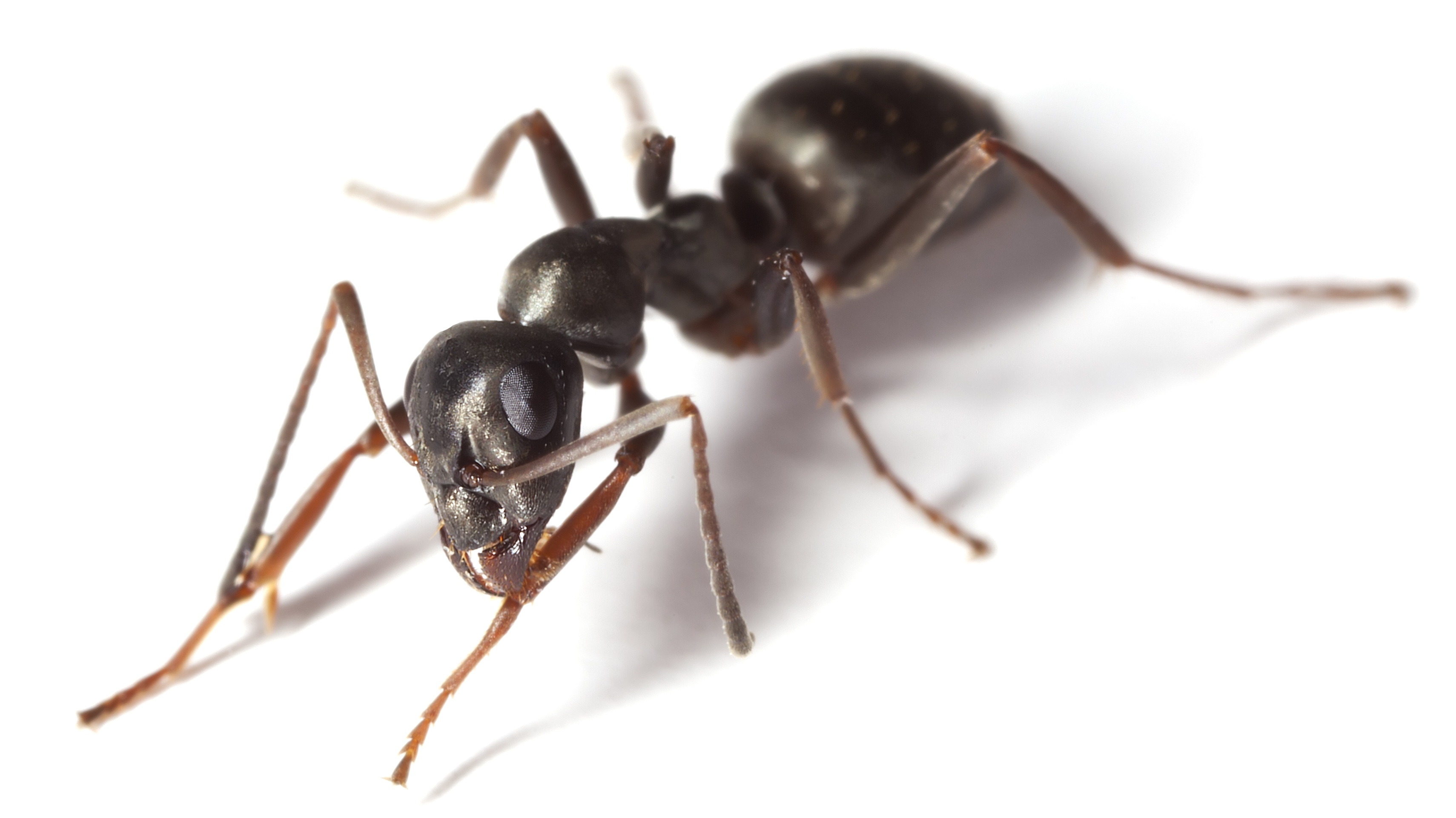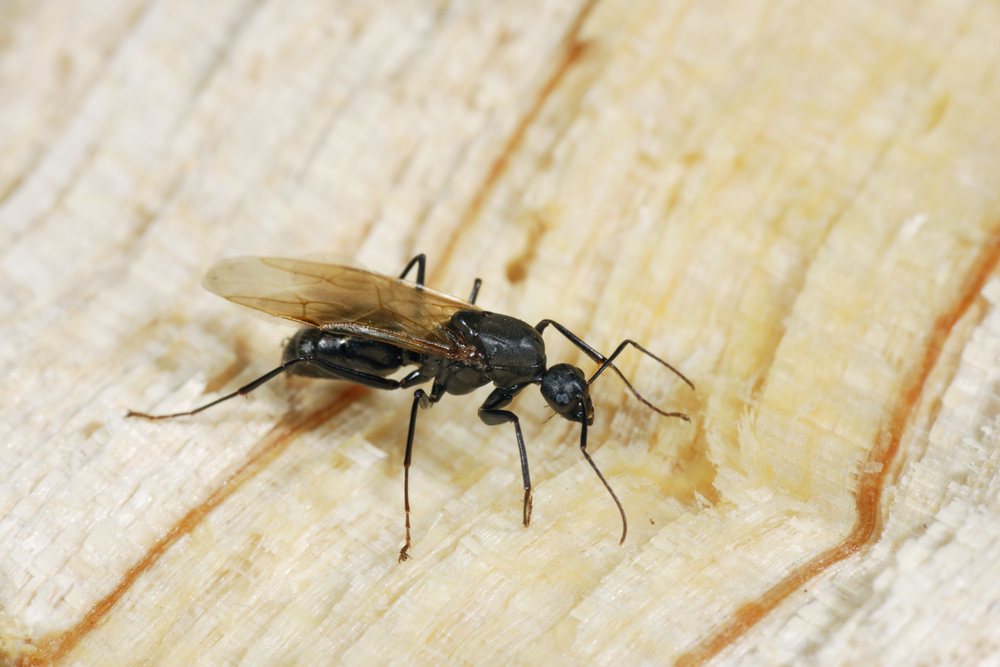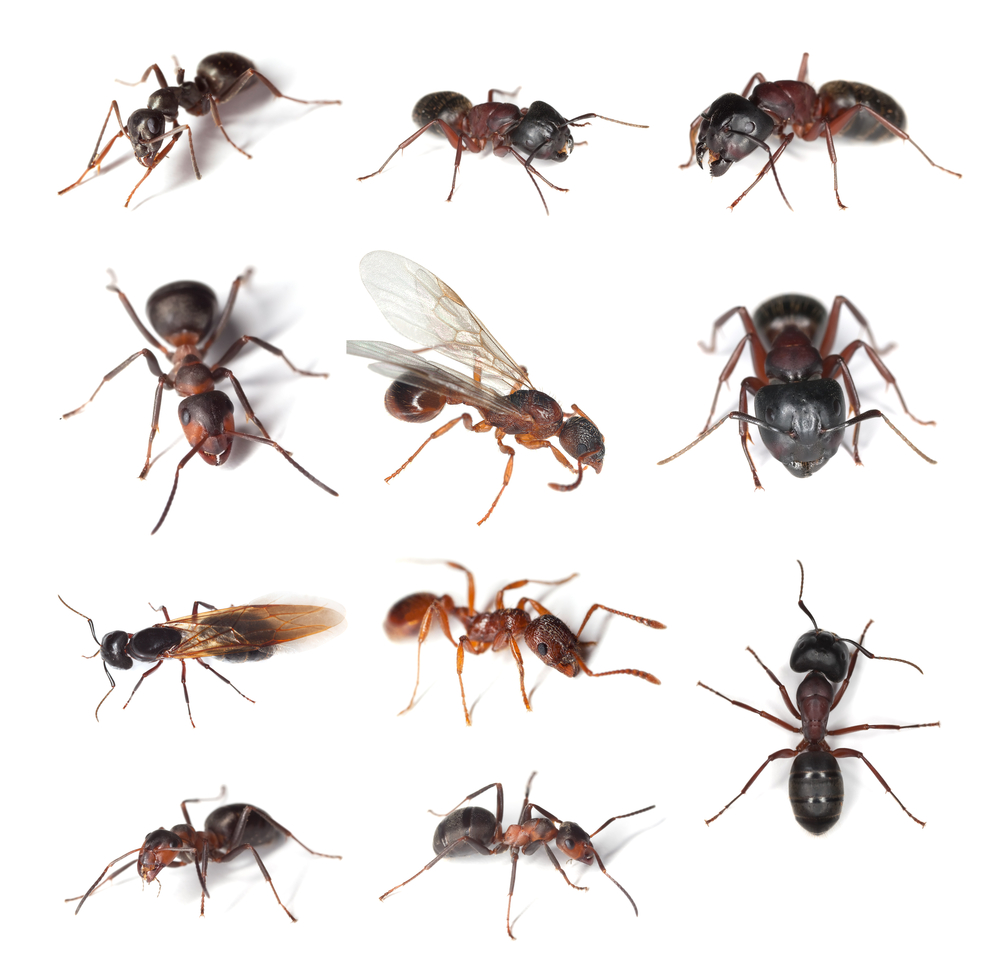Carpenter Ant

Appearance: Among the largest ants, from one-fourth to three-eighths inch long; most common species is black, but some have reddish or yellowish coloration; workers have large mandibles.
Habits: Normally nest in dead portions of standing trees, stumps or logs, or burrow under fallen logs or stones; invade homes in search of food; nests inside homes can do great damage; hollow out "galleries" in wood that are so smooth they appear to be sandpapered.
Diet: Do not eat wood; will feed on nearly anything people eat, particularly sweets and meats; also feed on other insects.

Reproduction: Queen lays 15 to 20 eggs the first year, and up to 30 eggs the second year; eggs complete their life cycle in about 60 days; worker ants can live up to seven years, while a queen may live up to 25 years.
Other Information: All kinds of houses, regardless of age or type of construction, are vulnerable to infestation and damage by carpenter ants; very difficult to control; colonies can contain up to 3,000 workers.
Occasionally, swarms of winged carpenter ant reproductives will emerge inside a home. Carpenter ant swarms usually occur in the spring and are a sure sign that a colony is nesting somewhere inside the structure.

Odorous House Ant
Appearance: Dark reddish brown to black, one-tenth inch long; antennae have 12 segments.
Habits: Nests found in a great variety of situations; in the home, often found nesting in the walls or beneath the floor; most likely to invade homes during rainy weather; travel in trails; forage day and night.
Diet: Honeydew melons in the wild; inside the home, they prefer sweet items.
Reproduction: Each female in the nest lays one egg a day; young reach adulthood in an average of 24 days; workers and females live for several years.
Other Information: When crushed, give off very unpleasant odor; colonies are very large, but can be driven away by invading Argentine ants.
Pavement Ant
Appearance: Light brown to black, appendages lighter than rest of the body; about one-tenth inch long; parallel lines on head and thorax; antennae of 12 segments.
Habits: Invade homes foraging for food throughout the year; nests are outdoors under stones, along curbing or in cracks of pavement; can nest indoors in walls and under floors.
Diet: Omnivorous; will eat many things, but prefer greasy and sweet foods.
Reproduction: Queen produces five to 20 eggs per day; brood develops in about 40 days; young go through 3 larval stages.
Other Information: Slow-moving; a particular nuisance around homes with slab-on-grade construction.

